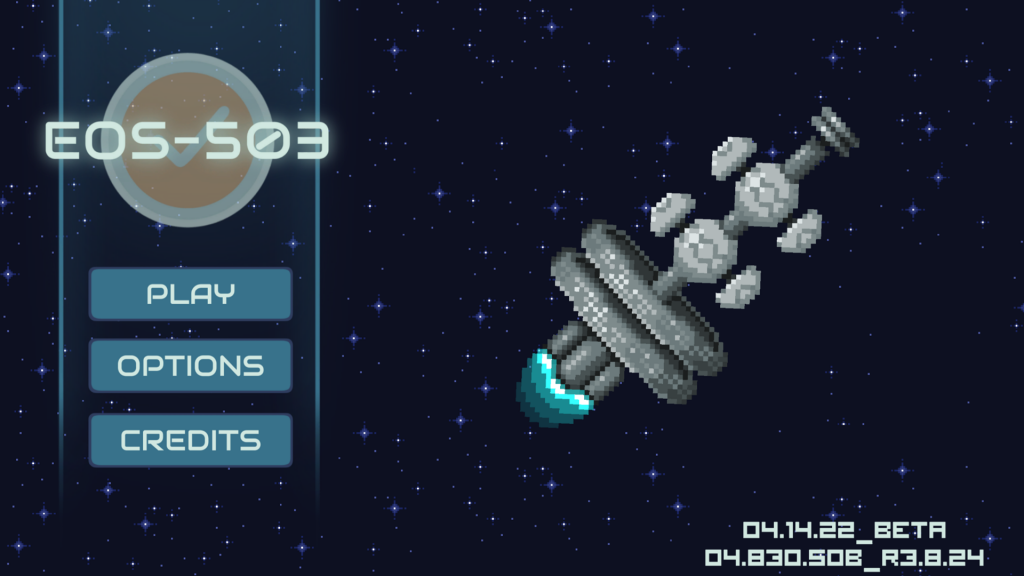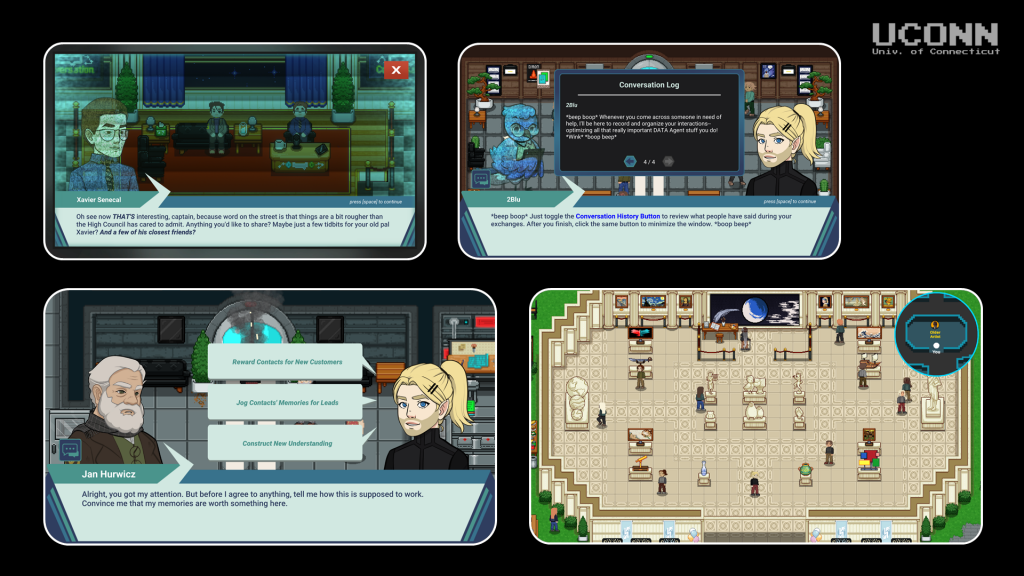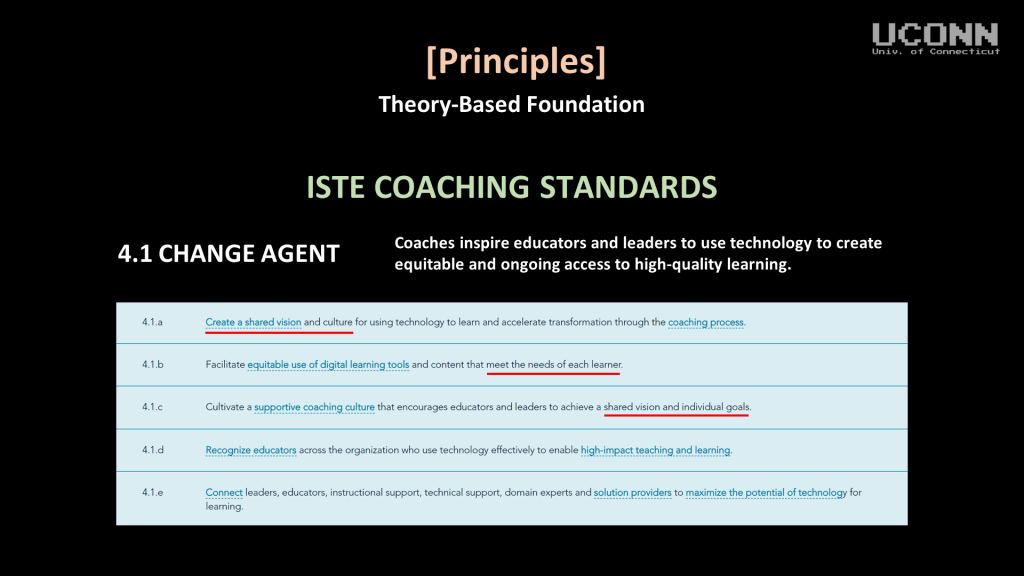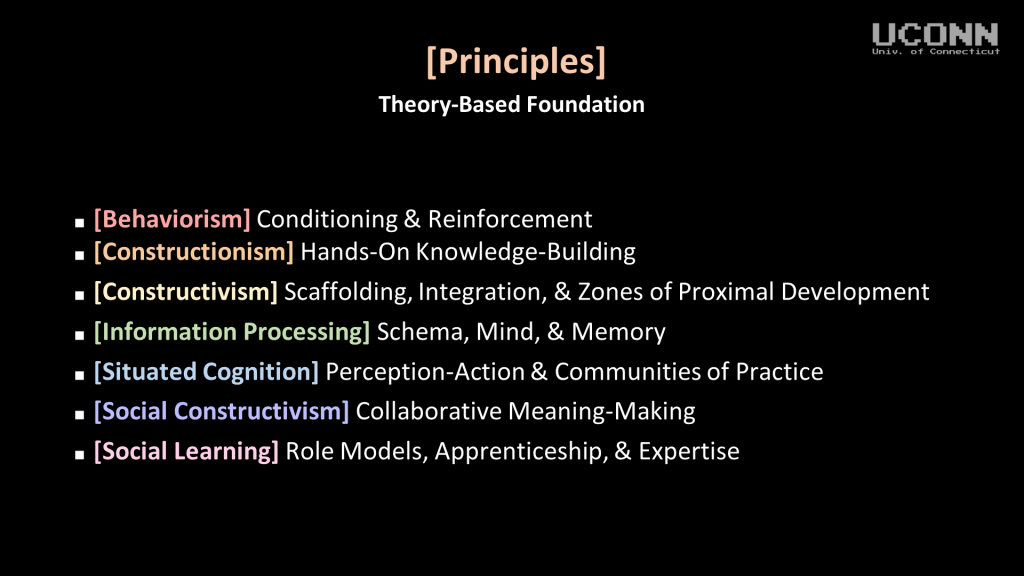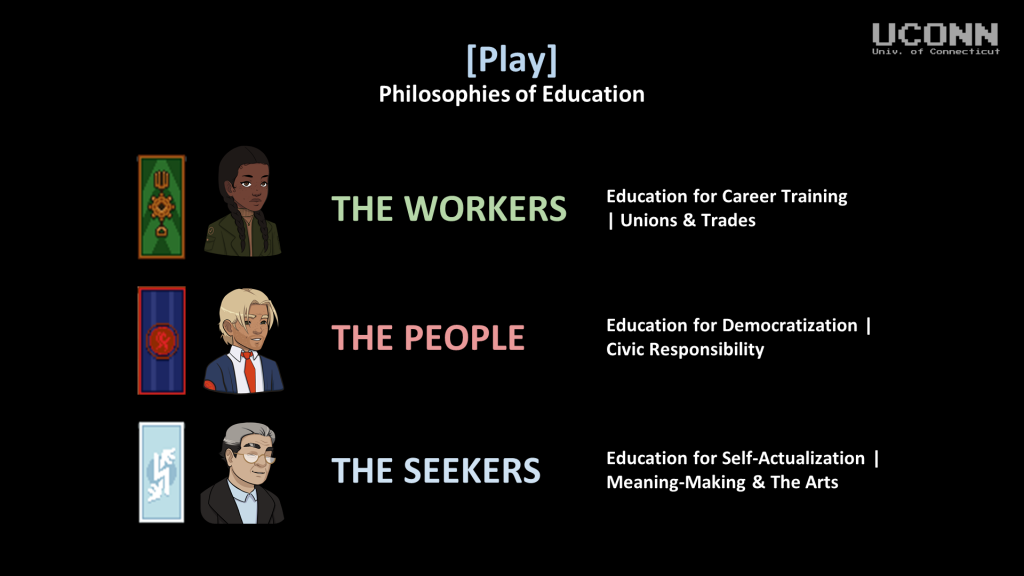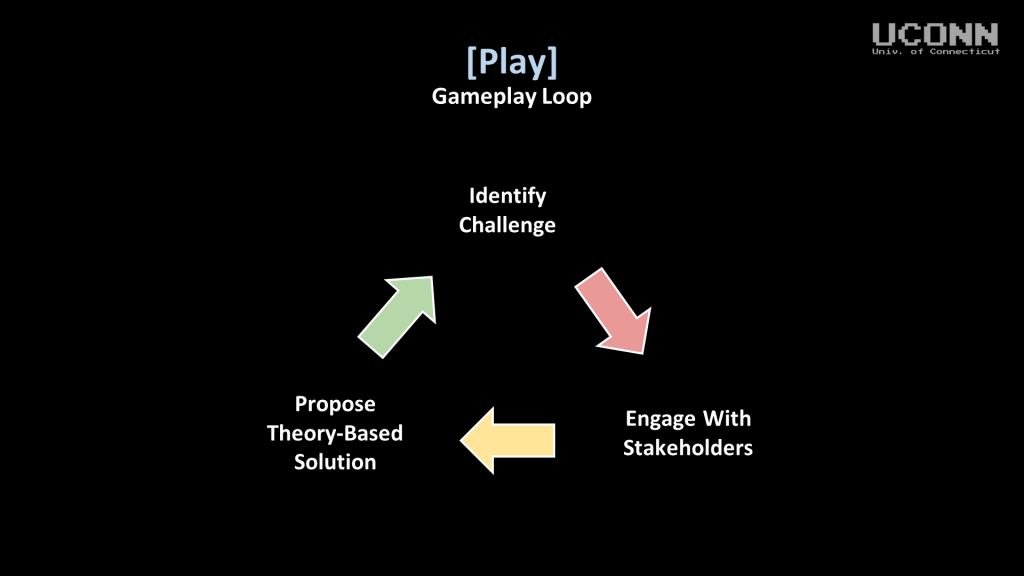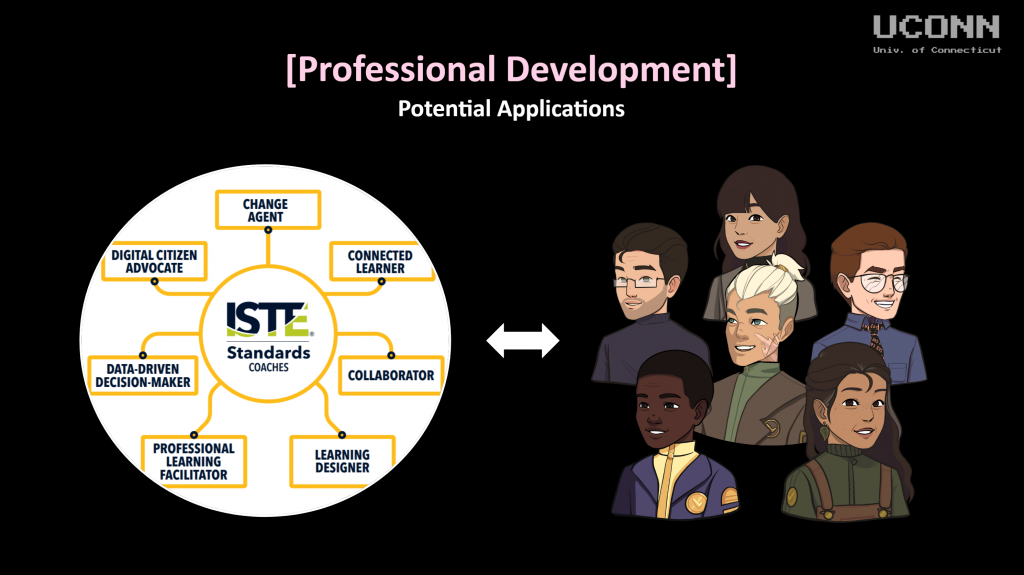
A FREE publicly-available early access version of EOS-503 is available HERE.
[For optimal performance, be sure to open EOS-503 using MICROSOFT EDGE, SAFARI, or FIREFOX internet browsers]
Please use this form to report bugs for squashing.
Please use this form to provide recommendations for future development.
EOS-503: A Game for Teaching Visionary Leadership & Problem Solving (2022)
On Wednesday, 11 May 2022 at 9:30a EDT, University of Connecticut educational technology expert Dr. Stephen Slota shared a presentation about a soon-to-be-published game for teacher education and assessment, EOS-503, at the UConn Conference on Teaching and Learning with iPads, Chromebooks, and Cloud-Based Computing (2022). Among topics discussed:
- UConn research centered on game-, play-, and story-based education;
- Overarching instructional game design principles and processes;
- The form and function of a free, publicly available, browser-based game for teaching visionary leadership and problem solving (EOS-503);
- Relationships between ISTE Standards, best practices for technology integration, learning theory, and philosophies of education;
- How EOS-503 players enact thought and action in line with in-service technology coaches/administrators;
- The gameplay loop embedded throughout EOS-503;
- How EOS-503 can be used to assess learning over time and support teacher professional development;
- 1:1 alignment of learning and game/play objectives as grounded in a situated understanding of thinking and learning;
- Affordances of EOS-503 for practicing rhetoric, persuasion, and mediation skills; and
- Visionary leadership as taught through a simulated practicum experience.
![]()
EOS-503 is an in-development browser-based game for teaching and assessing educator problem solving, built around a combination of contemporary learning theory and instructional technology integration skills. It encourages players to explore a fictitious space station, hone their communication skills with a diverse set of stakeholders, and overcome richly-authentic challenges grounded in the TPACK model and ISTE Standards.
By “richly-authentic challenges,” we mean that educators are provided an opportunity to solve realistic problems the way they would actually solve them in the real world. This is achieved through three primary pillars of design:
- Situating various learning theories in a context where their application makes real world sense;
- Demonstrating the consequences of adopting particular instructional technologies through particular pedagogical worldviews (as defined by the TPACK model and ISTE standards); and
- Maintaining a 1:1 ratio of game objectives and instructional objectives to reduce barriers to transfer and to make it easier for teachers to directly apply what they have learned.
Through maintenance of the 1:1 ratio between EOS-503‘s play objectives and our broader instructional objectives, the game is able to teach and assess how particular educators think about the integration of technology and contemporary learning theory into their particular educational classroom environments.
EOS-503 is not a didactic, lecture-style game, nor does it ask the player to memorize or manipulate abstracted symbols and patterns. It is instead a narrative adventure that presents educators with problems of practice alongside multiple theory-based educational worldviews and interactive opportunities that encourage rethinking and evolving one’s personal philosophy of education and cognition. Our goal is to ultimately make this resource available to all educators at no cost such that it may benefit as many teacher education, educational technology, learning science, and other instructional training spaces as possible.
